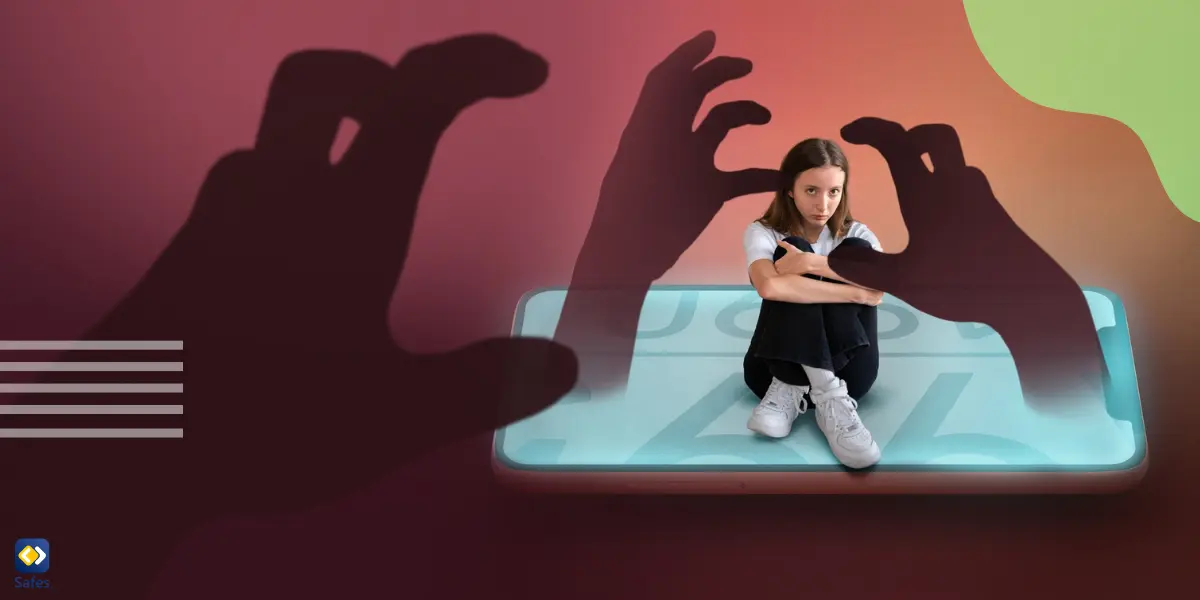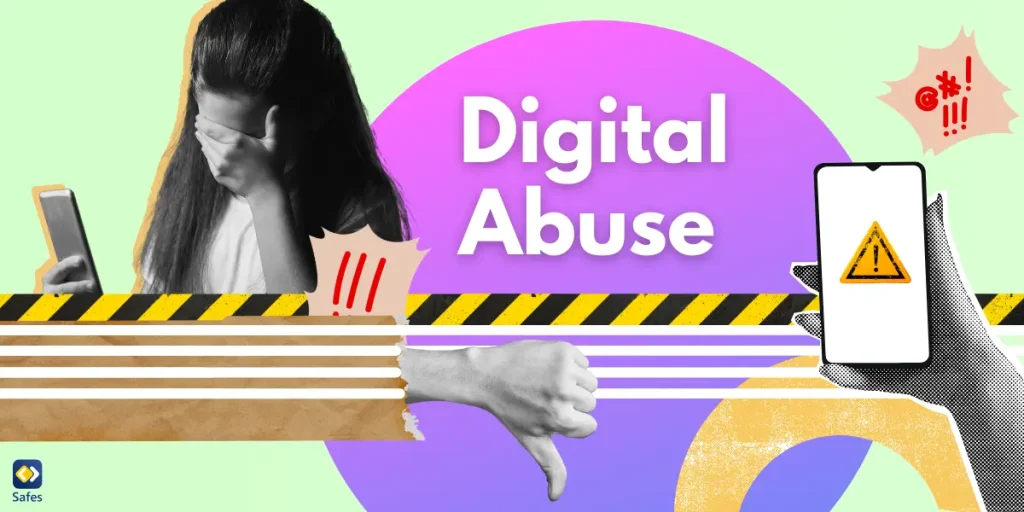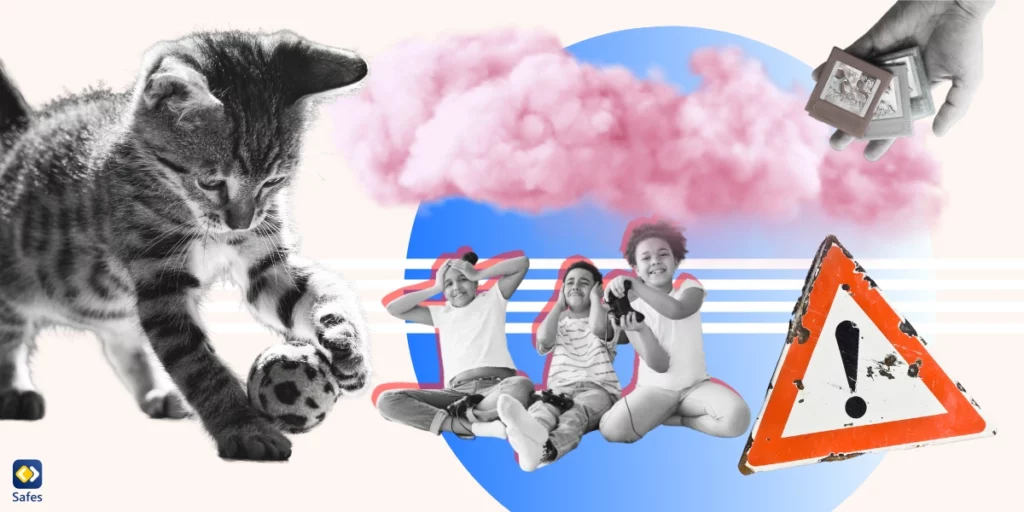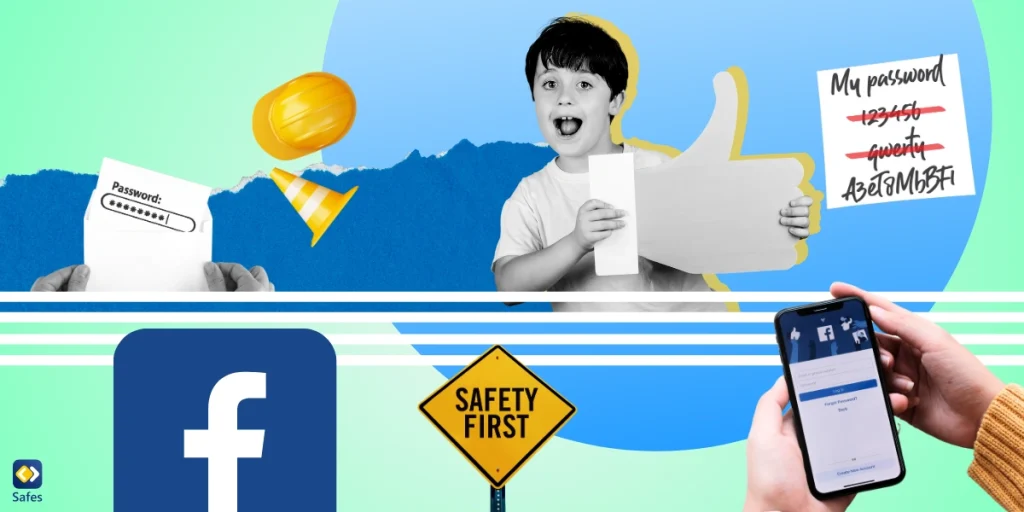Digital abuse is all about harmful behavior that happens through digital devices, like smartphones, tablets, and computers. It can take many forms, such as cyberbullying, online predators, and inappropriate content. This type of abuse can have serious effects on a child’s well-being, impacting their mental health, self-esteem, and sense of security.
Download and Start Your Free Trial of the Safes Parental Control App
As parents, it is crucial to understand what digital abuse is and learn how to protect children from it. This article will explore the different types of digital abuse and provide practical tips on how to keep kids safe online.
What Is Digital Abuse Definition?
Digital abuse is when someone uses technology to hurt or control another person. This can happen through phones, computers, or the internet. It includes cyberbullying, where someone sends mean messages or spreads rumors online. It can also involve someone pretending to be someone else to trick or embarrass someone. Digital abuse can make people feel scared, sad, or unsafe. It’s important to recognize it and know how to stop it to keep everyone safe online.
What Are Some Digital Abuse Examples?
To better understand different types of digital abuse, here are some common examples.
- Cyberbullying: Sending hurtful messages or spreading false rumors about someone online. This can happen on social media, through text messages, or on other online platforms.
- Stalking: Repeatedly sending unwanted messages, tracking someone’s location through their phone, or monitoring their online activities without consent.
- Impersonation: Pretending to be someone else online to damage their reputation or manipulate others.
- Harassment: Sending threatening or obscene messages, photos, or videos to intimidate or scare someone.
- Privacy Violations: Sharing private information, photos, or videos without consent, often to embarrass or blackmail the victim.
- Controlling Behavior: Demanding access to someone’s phone, social media accounts, or emails to monitor or control their activities.
- Manipulative Messaging: Using messages to guilt, shame, or pressure someone into doing things they are uncomfortable with.
- Teen Sexting Pressure: Forcing someone into sending sexual images or texts, and threatening to share them if they don’t comply with demands.
- Doxxing: Publicly releasing personal information about someone online without their consent, often with harmful intent.
- Financial Exploitation: Using online platforms to manipulate or steal money from someone, such as through scams or hacking.

Which Age Is More Vulnerable to Internet Abuse?
Based on an article about adolescent internet abuse, early to middle teens (ages 10-17) are typically more vulnerable to internet abuse. They often have less developed self-control, making them more prone to addictive behaviors and less able to recognize when they are being manipulated or abused. While many teens are tech-savvy, they may lack the emotional maturity to handle negative online interactions, making them particularly vulnerable.
What Are the Signs of Digital Abuse in Children?
Digital abuse can be difficult to detect, but there are signs that parents and caregivers can watch for in children. These signs may indicate that a child is experiencing digital abuse or struggling with online interactions. Here are some digital abuse signs to look out for.
- Behavioral changes, like:
- Withdrawal from social activities
- Sudden changes in mood
- Secretive behavior
- Avoidance of certain topics
- Changes in technology use, like:
- Excessive or decreased use of devices
- Reluctance to use technology
- Frequent account changes
- Physical symptoms, like:
- Sleep disturbances
- Changes in eating habits
- Academic and social impact, like:
- Decline in academic performance
- Social isolation
- Emotional and psychological signs, like:
- Low self-esteem
- Fear of missing out (FOMO)
- Apparent signs, like:
- Receiving threatening messages
- Exposure to inappropriate content
- Talk of online relationships

Are There Digital Abuse Laws?
Yes, there are various digital abuse laws to address and prevent online harm. Though each country may have set different laws, they mostly cover a range of issues, including cyberbullying, online stalking, digital privacy violations, sextortion, impersonation, and the non-consensual sharing of intimate images.
For example, many countries have created laws to make online threats, harassment, and unauthorized access to personal data illegal. There are also important laws that protect children from online exploitation and abuse. As digital abuse changes, these laws are crucial for keeping people safe and punishing those who cause harm. If you or someone you know is dealing with digital abuse, knowing about these laws and getting legal help can be important steps in dealing with and stopping the abuse.
How to Protect My Child from Internet Abuse?
Have you noticed the signs we mentioned earlier in your child? Just stay calm and follow the steps below:
- Encourage your child to talk about their online experiences. Let them know they can trust you and that you are there to help without judgment.
- Teach them about privacy settings, recognizing suspicious behavior, and the importance of not sharing personal information online.
- Suggest rules and guidelines for digital device use, including time limits and appropriate online behavior.
- Keep an eye on your child’s internet use, and use parental controls if necessary to ensure their safety.
- If you suspect serious digital abuse or its effects, get advice from a mental health professional who can provide support and guidance.
Final Word
In this time and age, protecting children from digital abuse is a crucial responsibility for parents. Learning the signs of digital abuse and taking proactive measures can help ensure that the online world is a safe and positive space for our children. To support parents in this important task, Safes offers everything you need to monitor your child’s online activities.
This parental control app is designed to keep children safe online. With features similar to or even better than Windows parental controls, Safes allows you to monitor internet usage, set boundaries, and receive alerts about suspicious activities. Our app makes it easier to guide children in developing healthy digital habits and navigating the online world confidently.
Download the Safes parental control app for Android and iOS, and take advantage of our free trial to explore all the ways you can enhance your child’s online safety. Your peace of mind and their protection are just a tap away.
Your Child’s Online Safety Starts Here
Every parent today needs a solution to manage screen time and keep their child safe online.
Without the right tools, digital risks and excessive screen time can impact children's well-being. Safes helps parents set healthy boundaries, monitor activity, and protect kids from online dangers—all with an easy-to-use app.
Take control of your child’s digital world. Learn more about Safes or download the app to start your free trial today!




